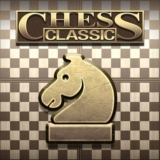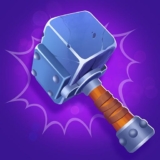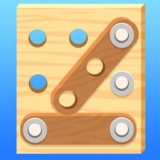Introduction to Chess Classic: A Complete Guide on How to Play
Chess Classic is a timeless strategy game that has been captivating players for centuries. Known for its intellectual depth, the game involves two players who command an army of pieces, each with its unique movement patterns. The goal is to checkmate the opponent’s king, rendering them unable to escape capture. Chess Classic remains a popular game, both online and offline, offering a balanced mix of strategy, foresight, and skill.
In this article, we will explore the basics of how to play Chess Classic, its rules, and tips to help you improve your game and strategize effectively.
What is Chess Classic?
Chess Classic is a traditional version of the board game chess, which is played on an 8×8 grid, with each player controlling 16 pieces. The game can be played between two human players or against an AI opponent, depending on the platform you’re using. The pieces include the King, Queen, Rooks, Knights, Bishops, and Pawns. Each piece moves in its unique way, and the objective is to checkmate your opponent’s king while protecting your own.
Chess has an ancient history, originating in India around the 6th century AD and evolving into the modern version we know today. The appeal of Chess Classic lies in its simple setup, but the nearly infinite possibilities during play, making it one of the most complex games in the world.
How to Play Chess Classic
1. The Chessboard Setup
The board is set up with alternating light and dark squares. Each player starts with 16 pieces: one King, one Queen, two Rooks, two Knights, two Bishops, and eight Pawns.
- The Back Row (Rank 1 for White and Rank 8 for Black):
- Rooks are placed at the corners.
- Knights go next to the rooks.
- Bishops are placed next to the knights.
- Queens are placed on the remaining squares of the back row. The white queen goes on the light square, and the black queen goes on the dark square.
- Kings are placed on the remaining squares next to the queens.
- The Front Row:
- Pawns are placed on the second rank (Rank 2 for White, Rank 7 for Black).
2. Basic Piece Movement
Each piece in Chess Classic has a unique way of moving:
- King: The King moves one square in any direction (vertically, horizontally, or diagonally). The objective is to checkmate the opponent’s King, which means putting them in a position where they cannot escape capture.
- Queen: The Queen is the most powerful piece, as it can move any number of squares along a rank, file, or diagonal.
- Rook: The Rook moves any number of squares vertically or horizontally but not diagonally.
- Bishop: The Bishop moves diagonally any number of squares.
- Knight: The Knight moves in an “L” shape: two squares in one direction (horizontal or vertical), then one square perpendicular to that. Knights are the only pieces that can jump over other pieces.
- Pawn: The Pawn moves one square forward but captures one square diagonally. On their first move, pawns can move two squares forward. When a pawn reaches the opponent’s back rank, it can be promoted to any other piece, except a king.
3. Basic Rules of Play
- Objective: The primary goal of chess is to checkmate your opponent’s king. This happens when the king is under attack and cannot move to any square where it is not under threat.
- Turns: Players alternate turns, starting with White. Each turn, a player must move one piece, except in special situations like castling or en passant.
- Check and Checkmate: If your king is under attack (in check), you must move it to a safe square or block the check. If you can’t move out of check, it’s checkmate, and the game ends.
- Castling: A special move involving the King and a Rook. It allows the King to move two squares toward a Rook, and the Rook moves to the square the King skipped over. Castling can only be done if neither piece has moved before, there are no pieces between them, and the King is not in check.
- En Passant: This is a special pawn capture that can occur if a pawn advances two squares from its starting position and lands next to an opponent’s pawn. The opponent can capture it as if it had only moved one square.
- Promotion: When a pawn reaches the opponent’s back rank, it can be promoted to any piece except a King, usually a Queen.
- Draw: A game can end in a draw if:
- There is no possible way for either player to checkmate the other (insufficient material).
- The same position occurs three times, or fifty moves are made without a capture or pawn move.
4. Starting the Game
To begin a game of Chess Classic, White moves first, and players alternate turns. Every game starts the same, but how you play depends on your strategy and style.
Here are a few opening tips for beginners:
- Control the center: Try to control the central squares with your pieces and pawns early in the game. The central area allows your pieces to move freely and gives you greater mobility.
- Develop your pieces: Move your pieces (especially Knights and Bishops) out from their starting positions. This increases your options and prepares your army for later attacks.
- Castle early: Castling protects your King and connects your Rooks, making it easier to launch attacks.
- Don’t move the same piece twice: In the opening phase, try not to move the same piece twice unless necessary. You want to develop as many pieces as possible.
Tips to Improve Your Chess Skills
- Study Chess Openings: Understanding common opening strategies and their variations will help you start the game with a strong foundation. Some well-known openings include the “Queen’s Gambit” and the “Ruy López.”
- Practice Tactics: Chess is often about tactics, such as forks, pins, and skewers. By solving tactical puzzles, you’ll improve your ability to spot opportunities during a game.
- Endgame Knowledge: Knowing how to checkmate with just a few pieces left on the board is crucial. Study basic endgame techniques, such as checkmating with a King and Queen against a King.
- Think Ahead: Always try to think a few moves ahead. Plan your moves and consider how your opponent will respond.
- Play Regularly: The best way to improve is to play frequently. Whether with a friend, online, or against an AI, practice helps refine your skills.
Conclusion
Chess Classic remains a symbol of strategic thinking and mental skill. By learning the rules, practicing your moves, and understanding the key concepts like controlling the center and creating tactical threats, you can become a better player and enjoy this ancient game to its fullest.
Whether you’re a beginner just learning the game or an experienced player looking to improve your skills, Chess Classic offers endless possibilities for intellectual challenge and fun. Keep practicing, strategizing, and thinking ahead — soon you’ll be a Chess master!
Instructions
Simply click on the chess figures to move them and play chess.















